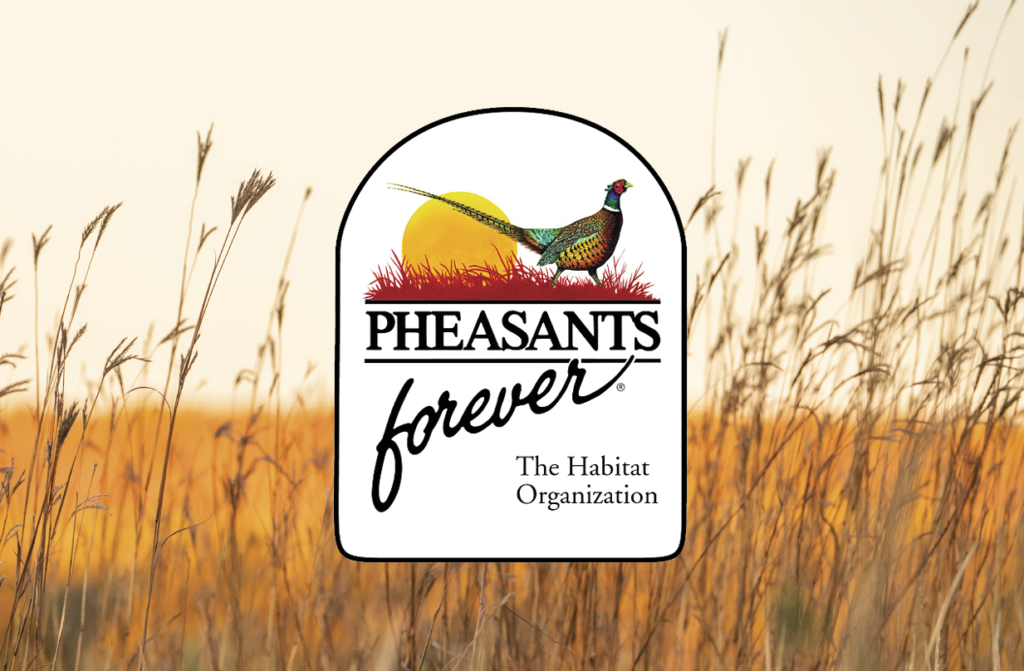TO MAKE A PHEASANT HUNTER

By Erik Peterson
There’s a snapshot in my mind’s eye of an uprooted box elder tree on the edge of a backwater of the Rum River in central Minnesota. A young boy, his father, and a black Lab named Shady, conceal themselves behind the rootball of the tree as the sun rises and two wood ducks land in the sparse spread of decoys.
The memory comes back in snippets. A single-action .410. Nervous excitement. Fingers stiff from cold. A pat on the back following a black dog’s retrieve.
Turn the page in the photo album of my youth. That’s me, smiling at the camera, crouched next to my dad, whose hand rests on the side of my first deer, a look of pride illuminating his face.
There’s me with my first puppy, a sweet black Lab that led me through those pivotal years as I left the nest and began seeking my own path.
Turn the page and it’s my new bride Faith and I with a sleek shorthair puppy named Kash, exploring western Montana on our honeymoon.
The pages turn quicker now as life speeds up.
There’s Faith, helping me pack my first archery elk out of the Montana mountains. A newborn climbing on Kash as his muzzle begins to gray. A toddler in my arms as I hold the antlers of a fine whitetail buck.
Mixed into this flurry of life, I began traveling the world as a photographer, documenting the work of humanitarian organizations. On one such job, in southern Ethiopia, I met a baby with an unceasing smile.
Faith and I had decided years before that we wanted to adopt. When I met Kassahun on that Valentine’s Day in Ethiopia, it all came together. Two happy, healthy, amazing boys. What more could I ask for?
My father went duck hunting the morning I was born. It’s worth getting that out on the table straight away, to convey the hunting fervor that courses through my veins.
After being up all night in the hospital, he snuck away, shotgun in hand, to a cattail-lined pond once mother and baby were clearly happy, healthy and sleeping.
He raised four boys to love and respect wild places and the critters that call them home. I’m working hard to do the same.
Our 12-year-old, Henry, has spent the past two years carrying his own .410 under Montana’s apprenticeship program, which allows kids to hunt with an adult before turning 12. Kasa did the same last year. The boys are learning to observe the world around them and pick up on the nuances of pheasant hunting: what it looks like when a dog gets birdy, how a rooster so often runs before flushing.
We’ve even spent some time in a duck blind, testing the patience of our restless pointing dog and equally restless kids.
My sons aren’t immune to the temptations that all kids face these days.
It’s hard to compete with screentime. And it’s hard to convey the concept that a little patience now will reap great rewards eventually … that walking until your legs are tired might mean you get the gift of watching the dog pin a rooster in the long grass. But that comes with time.
Each October we look forward to our annual family hunting weekend in northern Montana. We pack the cooler with all sorts of goodies to keep the motivation high. And because a good friend welcomes us into his comfortable home, treating us like guests at a bed and breakfast, I make sure to add a bit of struggle to the trip.
We pack a tent and sleeping bags and spend our first night, en route, at a favorite camping spot on the Missouri River. I’m trying to build some grit in my kids.
This family hunting with little kids comes with a price. I didn’t shoot many roosters the first couple years they tagged along. Our forays were kept short. I wanted to make the experience as fun as possible. I spent most the time divvying out treats in the truck while watching wistfully as roosters crossed the road.
No matter. I know it will all be worth it when I get to watch my grown boys teach their kids to hunt.
Upland hunters use bird dogs to recover game and the most effective shells to avoid wounded or lost birds. But our responsibility as sportsmen extends beyond fair chase and ethical standards. We have a responsibility to pass it on to a new generation of hunters. All of them.
They may not look just like us, and that’s ok. Be they People of Color, women, daughters, the neighbor’s kid, you name it — we need to invite everyone into the hunting fold.
When I was huddled behind that tree root with my father on my first hunt in the 1980s, we hunters were nearly 17 million strong in the U.S. By the time Kasa turned seven years old in 2016, that number had diminished to around 11 million, according to the U.S. Fish and Wildlife Service.
It’s no secret that state wildlife agencies and the country’s wildlife conservation system rely heavily on sportsmen for funding. Money generated from license fees and excise taxes on guns, ammunition, and hunting and fishing equipment, provide about 60 percent of the funding for state wildlife agencies, which manage the bulk of wildlife in the U.S.
Hunting has become an old white guy’s sport. And those guys are beginning to hang up their hunting vests. Simply put, we need new hunters. If we expect the tradition of hunting to survive, we’re going to have to start welcoming and even encouraging newcomers.
I would like to begin building a community that allows everyone to find a role model in the hunting world. Take a look at popular hunting media; there’s not a lot of diversity. How can I expect Kasa to someday make hunting his own, if he can’t for the life of him see how he fits into it?
His young mind has a hard time understanding the long hard looks he periodically gets when we stop at a smalltown diner or gas station while hunting. He can’t grasp why someone would treat him different based on something so far out of his control, like the color of his skin.
H
onestly, he gets too many of those looks just being black in Montana. But he’s an amazing, resilient kid. When people take the time to talk with him, he wins them over with his quick wit and sense of humor. And slowly, slowly, change is happening.
We stopped at the old-fashioned burger joint in town just the other day. A stranger saw the hat Kasa was wearing — blaze orange with a German shorthair emblazoned on the front. He walked right up to Kasa and said, “I saw your hat and I just had to ask about it, do you have a shorthair?”
Before I knew it we were talking gun dogs and honeyholes, and Kasa was petting the young pointer the guy had just picked up.
It wasn’t my son’s skin color this stranger saw. It was the shared love of bird dogs and pheasants and cool autumn mornings. We all have way more in common than we sometimes like to think.
That’s a message I’m trying to pass on to my boys. I intend to raise them the way my parents raised me — to treat others the way they want to be treated, and to leave the woodpile a little higher than they found it.
We added Zeek, a new shorthair puppy, to our family this spring. The boys are learning the joys and frustrations that come with teaching new concepts to a young dog. They like hiding the bird wings for me in the training field on summer mornings, watching as the light bulb comes on in the puppy’s mind.
Fall will be a season of learning for all of us. Turning a page, there’s another, more recent snapshot in my mind’s eye.
It’s a sunny October morning in northern Montana. Our 3-year-old pudelpointer, Gus, is locked on point. I watch Kasa take a few tentative steps toward the dog, looking up at me for guidance. A rooster, feeling trapped between dog and creekbed, erupts in flight. Kasa lifts the gun and gets a shot off.
He’s 10 years old and misses clean. I have just enough time to shoot before the bird is out of range. It folds and hits the ground hard. I look down to see a wide-eyed Kasa looking up at me. He’s giddy and talking fast: “Did I get him?” It’s clear he has caught the hunting bug.
SHARE ON
You may also like
The role corn plays for gamebirds and economies ac...
Sportsmen’s conservation policy issues from publ...
Sportsmen’s conservation policy issues from publ...


























